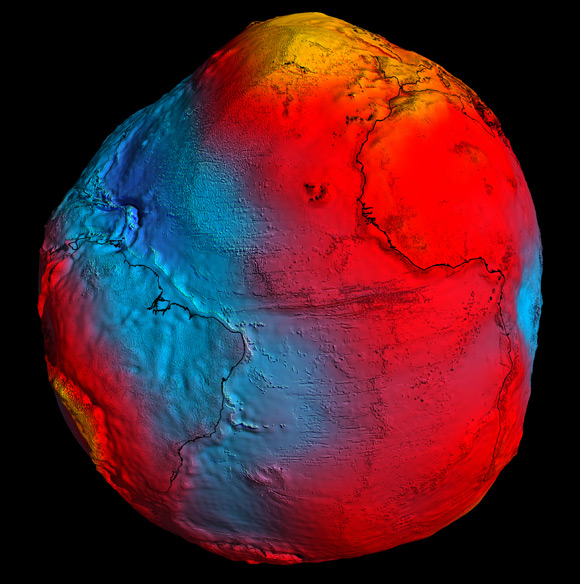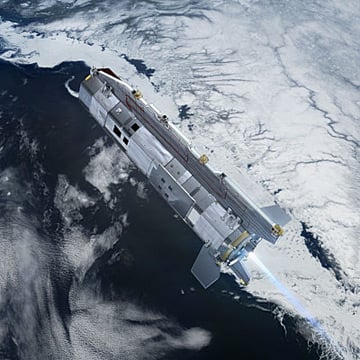This article is more than 1 year old
Scientists eye curvaceous Earth gravity map
ESA unveils new geoid
The European Space Agency today unveiled a new gravity map of Earth put together using data from its Gravity Field and Steady-State Ocean Circulation Explorer (GOCE) satellite.
The "geoid" represents "the surface of an ideal global ocean in the absence of tides and currents, shaped only by gravity", ESA explains, adding: "It is a crucial reference for measuring ocean circulation, sea-level change and ice dynamics – all affected by climate change."

Rune Floberghagen, ESA's GOCE mission manager, said: "This is a highly significant step for the mission. We now look forward to the coming months, when additional data will add to the accuracy of the GOCE geoid, further benefiting our data users."
 GOCE launched back in March 2009, and has now spent over 12 months collecting data with its Electrostatic Gravity Gradiometer. It relies on electric ion propulsion engines to compensate for "the tiny amount of drag generated by the few wisps of atmosphere" at its operating orbital height of around 250 km (155 miles).
GOCE launched back in March 2009, and has now spent over 12 months collecting data with its Electrostatic Gravity Gradiometer. It relies on electric ion propulsion engines to compensate for "the tiny amount of drag generated by the few wisps of atmosphere" at its operating orbital height of around 250 km (155 miles).
Volker Liebig, head of ESA's Earth Observation Programmes said: "Benefiting from a period of exceptional low solar activity, GOCE has been able to stay in low orbit and achieve coverage six weeks ahead of schedule.
"This also means that we still have fuel to continue measuring gravity until the end of 2012, thereby doubling the life of the mission and adding even more precision to the GOCE geoid."
As well as its use in oceanographic studies, the geoid could help "improve our understanding of Earth’s internal structure", leading to "a deeper knowledge of the processes that cause earthquakes".
The recent Japanese earthquake was caused by suboceanic tectonic movement which is not visible from space. However, such events cause "signatures in gravity data, which could be used to understand the processes leading to these natural disasters and ultimately help to predict them". ®
